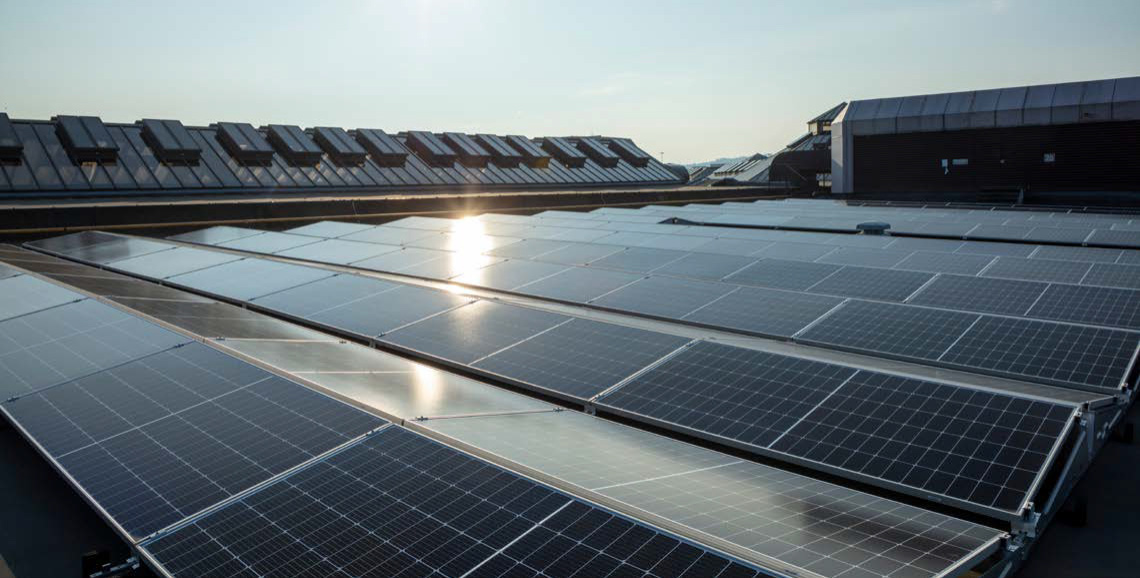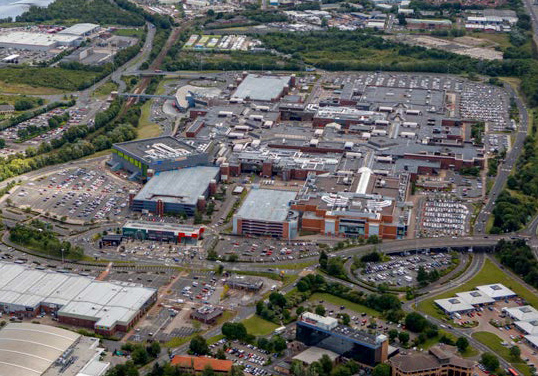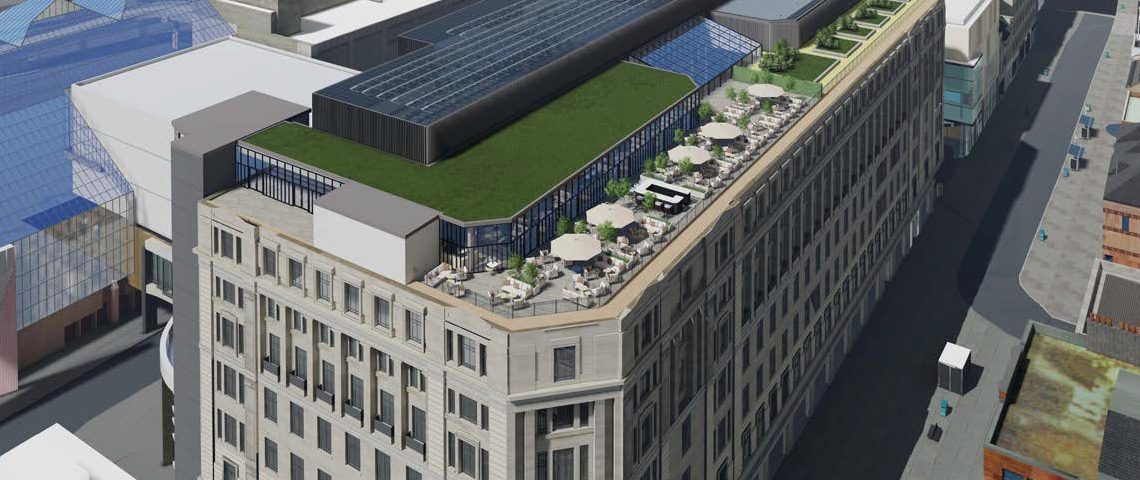ACTIVATING THE E IN ESG
The challenge from an environmental perspective is how to reduce those risks created by the core business activities that have actual or negative impacts on air, land, water, ecosystems and human health. Positive outcomes from carefully planned strategies seeking to minimise environmental liabilities, lower operational costs, and improving profitability through energy and other efficiencies, play a large part in managing shopping centre and retail assets.
Using one of the UK’s largest shopping centres at Metrocentre in Gateshead as a good example of leading sustainability and greening audits, Sovereign Centros and Savills Earth have been collating a methodology for introducing future sustainability measures within the centre.
Initiatives range from small adaptations to game changing programmes. Working with specialised renewable and low carbon technology consultant Syzygy Consulting, we are installing one of Europe’s largest shopping centre PV installations with over 4,700 rooftop and solar car port panels. This £3.2m project will generate over 1.25m kWh of electricity, enough to feed 340 homes and reduce equivalent emissions of 315 tonnes of carbon dioxide, as well as provide 37% of our electric supply over the system’s 25-year planned lifetime.
Supporting a year-on-year increase in Metrocentre customers’ shopping visits by electric vehicles, 46 new EV charging bays are also being provided within the car parking zones. These will be solar powered with a capacity to charge 600 cars each year.
While this environmental project is one of the largest and most noteworthy projects within the UK retail sector, it also provides our asset management team with real-time sustainability data and learnings that support both a longterm centre strategy for Metrocentre as well as providing knowledge-sharing opportunities with other major shopping environments that we manage throughout the UK.
A CLEANER RETROFIT
One of the key considerations for any shopping centre investor is how to tackle the climate emergency through delivery of a net zero emissions policy, while futureproofing the asset through improved design and resilient infrastructure. Repurposing or reuse, rather than rebuilding, can present a significant embodied carbon opportunity.
One of the most recent examples we’re undertaking is at the St Enoch Shopping Centre in Glasgow. After significant investment to the centre’s retail offer, plans are in place to convert the former Debenhams into six floors of Grade A offices. Post pandemic, office occupiers are demanding more in terms of their working environment, technology and HVAC installations, with many firms prepared to commit to sustainable commercial space in line with their ESG policies and agree strong rental levels for the right product. It is these principles that are being demonstrated by our design team at St Enoch. It makes sense both occupationally and environmentally, with c.18,000 tonnes of embodied carbon being saved through refurbishing rather than thinking about demolition and rebuilding.
Trying to force the value of a place through retail use alone is rarely a viable option. Generating non-retail uses through alternative but complimentary operations will not only support increased retail footfall and social benefits, but also be considered as key to the future existence of the shopping centre environment.
In many of our schemes we are seeing this put into practice with the introduction of other community uses, such as healthcare which benefits from being connected to public transport, being located in clean and secure environments, close to the people they serve and complimentary to the underlying retail offer.
The bottom line is that diverse mixed-use places improve environmental efficiency through densification, and a reduction in the over exposure to retail, while at the same time boosting alternative footfall activity, and providing an opportunity to reduce future impact through the introduction of environmental initiatives during the retrofitting process.
IS VIABILITY STILL A DETERRENT?
However, there are undoubtedly situations in which an existing infrastructure is unfit for purpose or becomes unviable in its present form. It’s about balance, and at times there is no choice but to start again. This can provide an opportunity to create amazing new places with best practice environmental standards and blended use typologies. Working alongside sustainability-savvy investors and socially inclusive organisations has ensured that all new mixed-use developments Sovereign Centros are involved in are able to include and capture many of the sustainability and environmental requirements expected by the delivery of industry leading schemes, through carefully worked designs and differing building forms.
Whilst challenging to introduce and retrofit sustainable measures to the likes of existing and well-established shopping centres, the opportunity to design and create future-proofed technologies within new developments can support a different approach to sustainability thinking.
Any introduction of green practices will bring about capex requirements, and if technology-led, likely to require a large budget to deliver. With the introduction of enhanced materials and faster processing times, environmental technology continues to see improvement gains year-on-year, albeit with cost implications.
As ESG credentials begin to be embraced by landlords, investors, and retail brands, can those parties afford not to invest in the sustainable targets now expected by future generations and customers? If not addressed, then the potential to face reputational and regulatory risks becomes a real possibility. As we challenge reductions in our carbon outputs and improvements to operational efficiencies, then these parties do have a responsibility to work together in bringing about positive change through well thought out future ideas whilst also being supported by realistic capex requirements.
The shopping centre environment thrives on successful retailers who in turn must align their own customers desire in meeting climate change targets and the transition to a greener economy. Implementing positive change can be costly, but with careful thought and foresight it can be possible to achieve meaningful impact with limited resources, which many retailers are already achieving.
Despite this, many small and medium sized companies can find ESG a costly exercise, and lacking a clear financial gain. ESG as a definition can also be intimidating with its uncertainty around standards and frameworks. But can any business afford not to have an ESG strategy?
This further reinforces the requirement for a long-term environmental strategy, being created and supported by a pro-active asset management role, to help create wise investment decisions that can challenge and lead to improved retail values.




